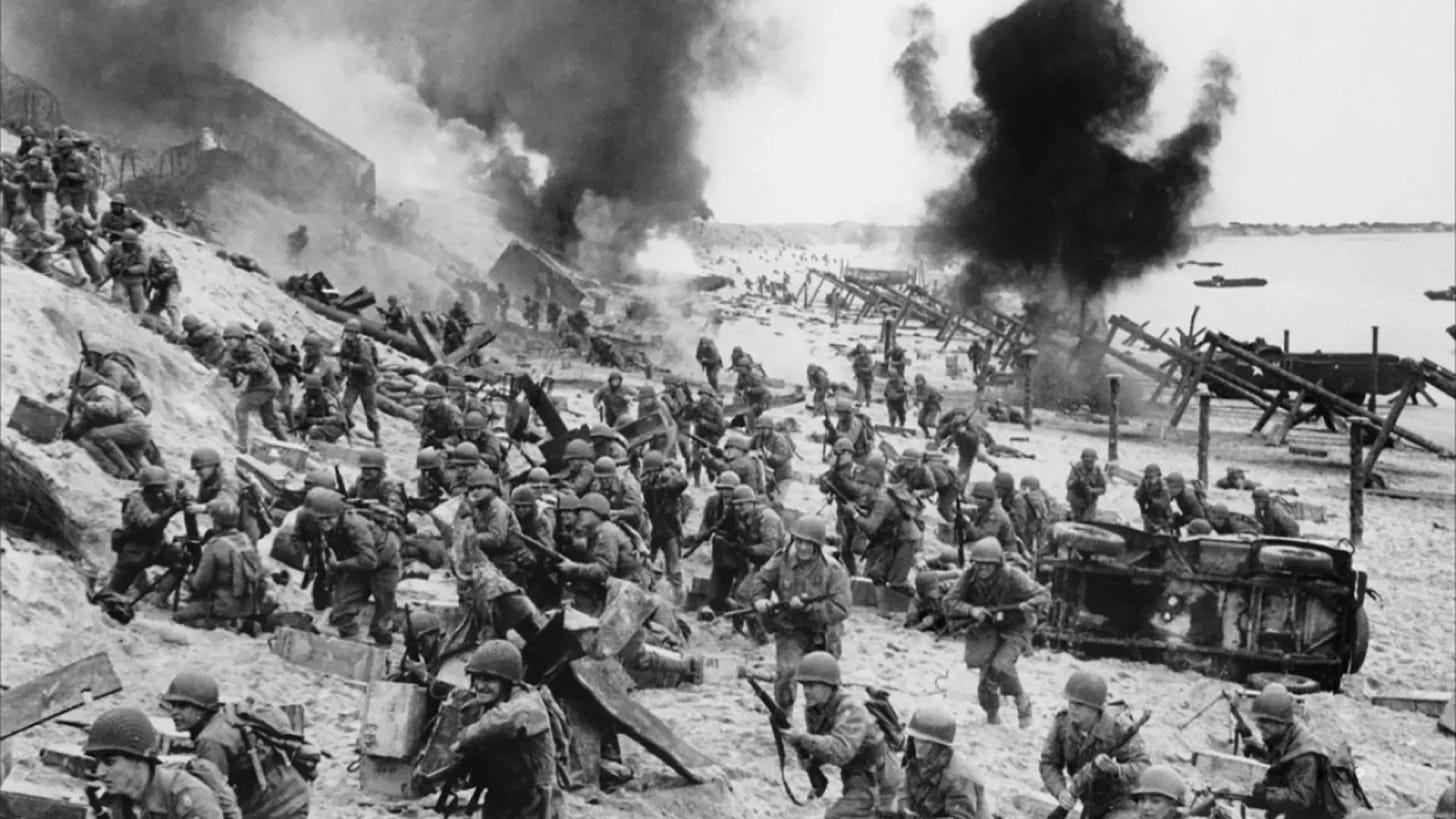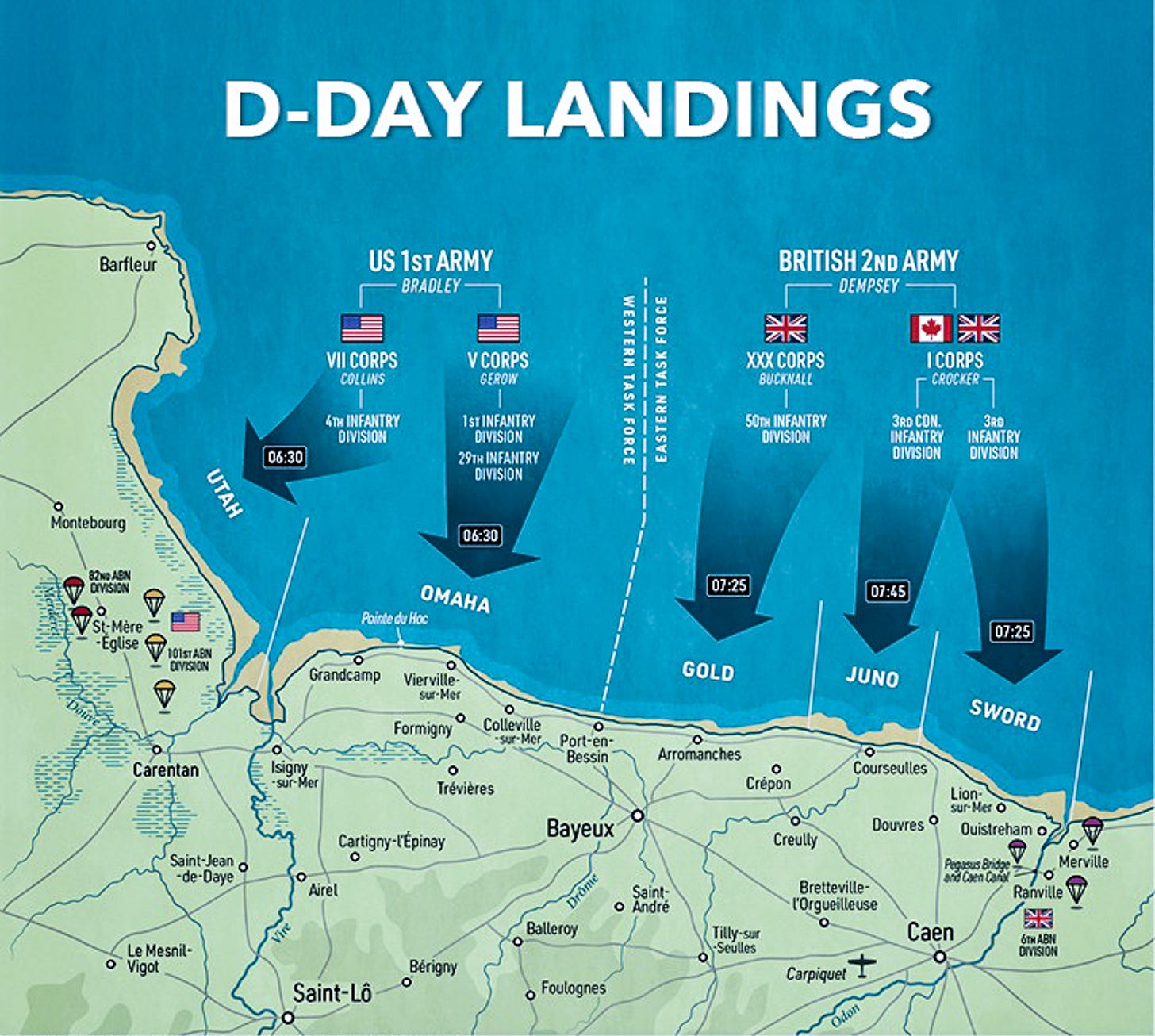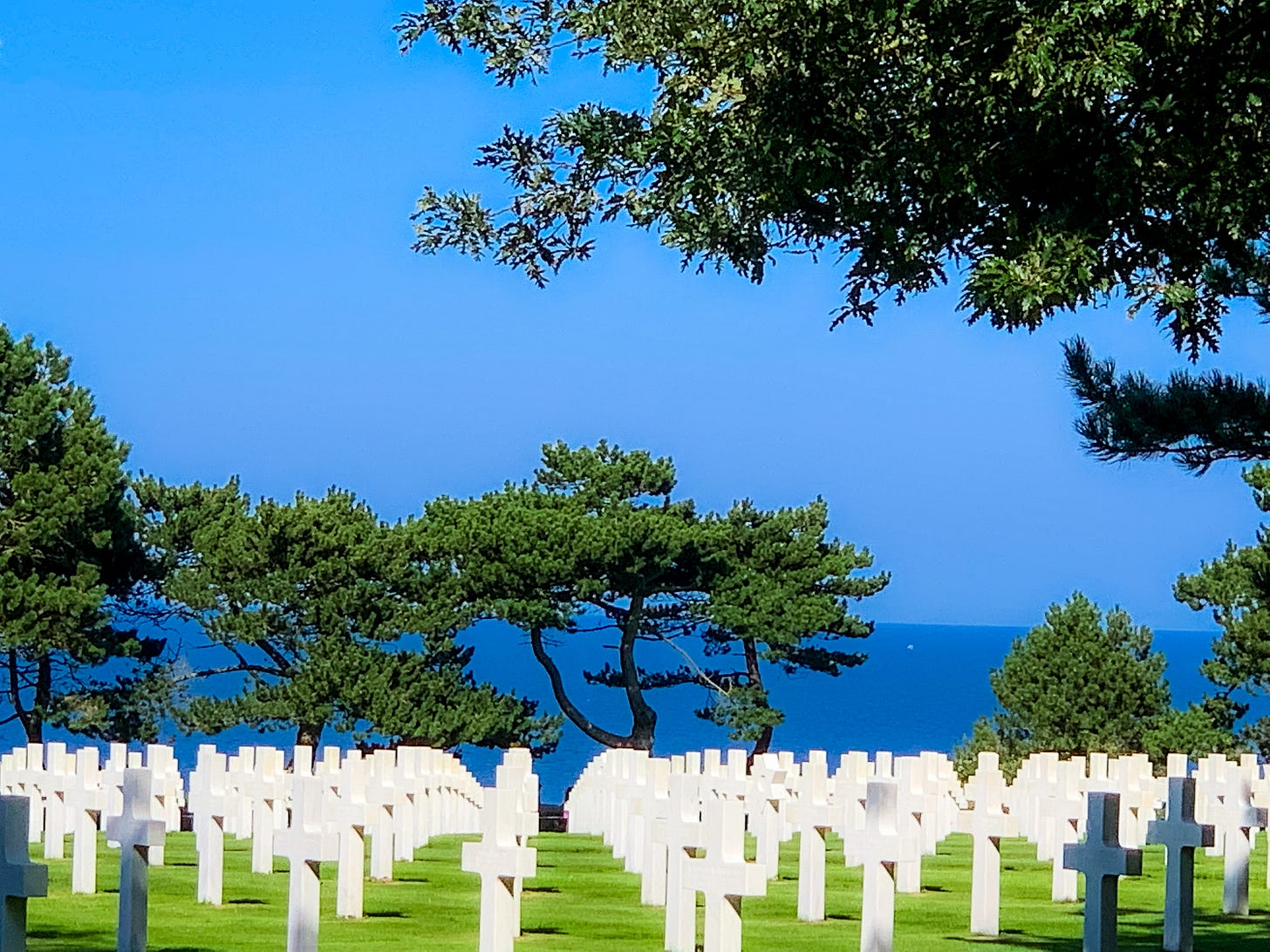The Normandy Invasion. D-Day, June 6, 1944.
The beginning of the end for the Third Reich. As Biden said today, the threats of tyrants are ever-present.
It was mad, and harrowing. And it was deafening with the sound of screams and artillery barrages and exploding mines and rifle fire. On D-Day, the sixth of June, 1944, American, Canadian and British troops carried out the largest aerial and amphibious assault in history. It may also have been the toughest. The beaches of Normandy were so heavily defended that some soldiers were killed by machine gun fire before they could even get out of the landing boats. Others fell by the hundreds and thousands before they could get past the high water mark. But the assault succeeded, and it was the beginning of the end for Hitler and the Third Reich.
David Teacher, No 71 Royal Air Force Beach Unit recalls:
Jerry started to shell the beach at about 9am. Suddenly, all hell let loose. The beach was under fire from shells, mortars and machine guns, we dived for cover. The sea was covered in blood and vomit and flies began to arrive by the thousands, which created another nightmare … We continued all night and the following day without a break. Slowly, slowly we overcame all the nightmares. There was no lack of humour. A soldier coming ashore asked, “Is this a private beach? I was promised a private beach. If not I am not staying.” And we heard, “My mother told me not to travel by air, she thought it was much safer by sea.” An army officer came ashore and instead of getting his men off the beach quickly, he stopped to consult his map. I approached him, “Sir, off this beach, now!” “And who are you?” he asked. “Sorry, no time for introductions.”
Collier’s war correspondent Martha Gellhorn had stowed away on a hospital ship, pretending to be a nurse. Later she’d get her press credentials stripped for this stunt, but on D-Day she was the only female war correspondent on the beach at Normandy. She would write:
Everyone was violently busy on that crowded, dangerous shore. The pebbles were the size of apples and feet deep, and we stumbled up a road that a huge road shovel was scooping out. We walked with the utmost care between the narrowly placed white tape lines that marked the mine-cleared path, and headed for a tent marked with a red cross …
After the shooting stopped, a vision of the scene on the beach was recorded by Ernie Pyle, the Pulitzer Prize-winning journalist who would later be killed in action on Ie Island, Okinawa:
All that remained on the beach was some sniping and artillery fire, and the occasional startling blast of a mine geysering brown sand into the air … That plus the bodies of soldiers lying in rows covered with blankets, the toes of their shoes sticking up in a line as though on drill. And other bodies, uncollected, still sprawling grotesquely in the sand or half hidden by the high grass beyond the beach. That plus an intense, grim determination of work-weary men to get this chaotic beach organised and get all the vital supplies and the reinforcements moving more rapidly over it from the stacked-up ships standing in droves out to sea. Now that it is over it seems to me a pure miracle that we ever took the beach at all.
Hitler’s troops had invaded France through the dense forests of the Ardennes on May 10, 1940. Germany conquered France in less than a month. The mayor of Paris had, in grief, surrendered the city to prevent its being pounded and burned to smoldering ash. For the next four years, the French Resistance fought the war through impossibly courageous acts of disruption, guerrilla warfare, and sabotage.
But liberation would come. Once the beaches were taken by the Allies, they moved steadily inland, field by barricaded field, mile by mile, hamlet by hamlet—and in the weeks that followed the invasion, celebration spread across France in wave after wave of small healings. Near the coast, amid the ruined streets and felled buildings, the French began to raise themselves from the dead.
Eight days after D-Day, John H Fenton, No 4 Beach Squadron, Royal Air Force, witnessed a small miracle:
On 14 July 1944, the French in our locality were able to celebrate Bastille Day for the first time in four years. In the morning, all attired in their best, they went to church. Any Frenchman with a uniform wore it. An ex-Naval man, holding his little girl by the hand, wore his sailor’s uniform. The village postmen wore theirs. The British organised a fete with army transport bringing in civilians from nearby villages. A Royal Marines Band and a Scottish Regiment provided music. There were races for the children, even refreshments. To mark the occasion, practically every truck, jeep or motorcycle had a spray of red, white and blue flowers tied on the front. In addition, some had ‘Vive La France’ and tricolours chalked on the sides. A festive air prevailed.
But life would not go on for everyone. The cost of the Normandy campaign, laid bare on its page at WhiteHouse.gov, was high on both sides. From June 6th through the 21st of August, the Allies landed more than two million men in northern France and suffered more than a quarter of a million casualties: 72,911 killed/missing and 153,475 wounded. German losses included over 240,000 casualties and 200,000 captured.
After VE Day, the French honored the fallen who gave them back their country. The sea of white crosses—all of them facing west, looking towards home across a sapphire Atlantic—bear silent witness to a war that had to be fought, a war that gave us the freedoms that it is now our responsibility to cherish and defend.





I love the way you put this huge, tragic loss of life into the story of victory for the Allied Forces. This was the defining battle in a war that had to be won. I have long admired Martha Gellhorn and her determination to get to the battlefront and tell her version of the story. What a plucky journalist, in a time of male dominance in the field. She was an original, not to be held back by societal norms for women. Her relationship with Hemingway is so very interesting. Their competing ambitions, the need to report from the source; they would implode in the end but the fire in between is fascinating stuff!